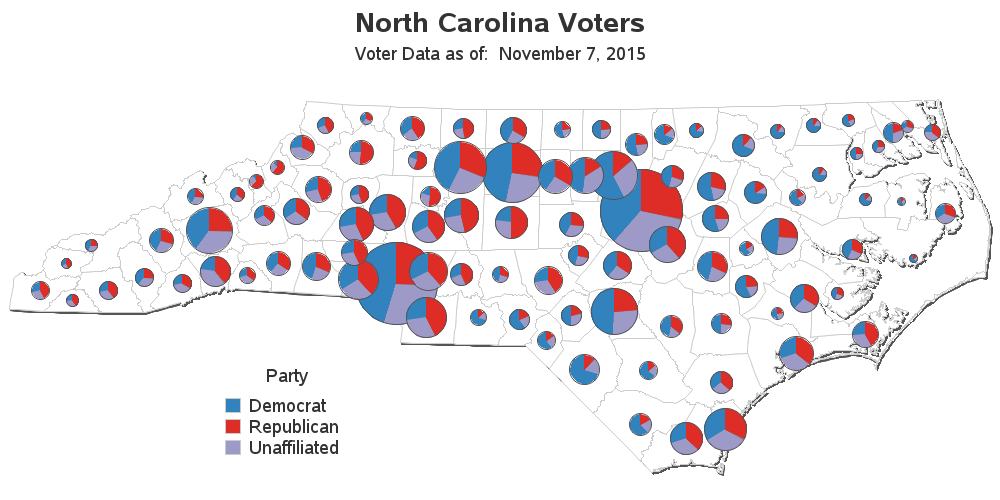The holiday season is a festive time of the year. But it can also be a nail biter for retailers. Months of planning can be sidetracked by fickle consumers or aggressive pricing from competitors. Paying attention to even a little bit of data can work wonders. In October, SAS conducted
Uncategorized
„Mein Name ist Dr. Richard Dump. Ich bin IT Verantwortlicher bei einem großen global agierenden Unternehmen. Unsere IT Strategie ist durch eine konsequente Cloud Ausrichtung in Bezug auf Hardware und Software durch internationale Provider (auch außerhalb der EU) gekennzeichnet. Dies beinhaltet ebenso die Verarbeitung von personenbezogenen Daten.

John Beale was one of the highest paid government employees. A 10-year veteran of the Environmental Protection Agency (EPA), Beale defrauded the Federal Government of nearly $1M in employment wages and fraudulent travel. Beale came under suspicion after it was noticed that the he was still being paid wages 19

Here in the US, we've got the Thanksgiving holiday coming up soon. And the keystone of this holiday is a big dinner, with lots of traditional Thanksgiving foods. But where does all this food come from, and which farmers should we thank for which of the food items? I use SAS

Learn the top 5 reasons for managing data where it lives – whether it's in database or in memory, in the cloud or in-stream.

Barbarians are relentless, and they are inside the gates! That didn't go well for the Romans, and they had the most advanced technologies of their day. So how do we do better against the relentless waves of cyber barbarians attacking virtually everywhere? The answer to that is analytics, which offers early

Identity fraud typically conjures thoughts of credit card scams or stolen Social Security numbers. Medical identity fraud is often overlooked, but can be a crime that kills. On the black market your medical identity can be worth as much as $50 per person versus $1 for a Social Security Number.

Know your data. Do a needs analysis. Organize for success. Empower users. These are four best practices for data and analytics that you'll want to hear more about. In my first three posts in the Analytics in Real Life blog series, we learned how higher education customers are using SAS and why

Did you know that you can use the POLYGON statement in PROC SGPLOT to draw a map? The graph at the left shows the 48 contiguous states of the US, overlaid with markers that indicate the locations of major cities. The plot was created by using the POLYGON statement, which

.@philsimon on whether data governance is still relevant.

Identity quizzes are a hot topic among fraud fighters, and particularly so among tax administrators. A quick web search finds that a lot of state tax agencies use quizzes to fight refund fraud, including Indiana, Louisiana, and Ohio. Even the IRS has gotten into the game. In reading the press

This blog is co-authored by Susan J. Slaughter and Lora D. Delwiche. SAS Press is now 25 years old. As impressive as that is, a bigger milestone for us personally is that The Little SAS® Book is now 20 years old! We had no idea back then that we would still

In many procedures, the ID statement is used to identify observations by specifying an identifying variable, such as a name or a patient ID. In many regression procedures, you can specify multiple ID variables, and all variables are copied into output data sets that contain observation-wise statistics such as predicted

To prepare for the data challenges of 2015 and beyond, health care fraud, waste and abuse investigative units (government funded and commercial insurance plans, alike) need a data management infrastructure that provides access to data across programs, products and channels. This goes well beyond sorting and filtering small sets of

International Fraud Awareness Week begins on Monday, and you know what that means. Our intrepid team of fraud experts is taking over the State and Local Connection blog! Fellow bloggers, get ready. Each day next week one member of the SAS Fraud and Security Intelligence team will post on a

I brushed aside some sawdust on the workbench and set my laptop down. It wasn’t really mine. SAS Library Services had kindly lent me a new laptop for the “Making Sense of Sensor Data” workshop at UNC’s BEaM Makerspace. I had just set the laptop down…in sawdust. Like any normal

With a major election coming next year, I was wondering if there have been any shifts & changes in the voters in my state. This seems like an interesting opportunity for some data analysis, eh!?! To get you into the spirit of elections, here's an "I Voted" sticker from my friend

As I visit my clients, it sometimes surprises me when they avoid the use of PROC REPORT. “It’s too different”. Even those that do use it, often fail to take advantage of the procedure’s power by ignoring the compute block. Yes this procedure is different from any other. Yes using

This summer, I had several interesting sessions with customers and prospects. Much to my surprise, two of them, both multinational organizations, were doing most of their data related tasks in Excel. This happens every now and then -- I come across organizations (like yours?) where people are manipulating and ‘analysing’

I feel like I'm singing a song called Data in the Sky – With Options! The cloud is forever in our minds these days as a lower cost option because it requires fewer resources to address our data needs. Cloud solutions are an increasing part of many organizations' budgets every year. Whether enterprise data is

With over 1,000,000 words in the English language, why is it that we tend to use the same words over & over? This blog shows a hierarchical approach to help you branch out and choose more descriptive words. But first, to get you into the mood for a blog about

How much does this big pumpkin weigh? One of the cafeterias at SAS invited patrons to post their guesses on an internal social network at SAS. There was no prize for the correct guess; it was just a fun Halloween-week activity. I recognized this as an opportunity to apply the

SAS Press is now 25 years old! To commemorate this milestone, I decided to research a question that has fascinated me for years: Who was the first person outside of SAS Institute to write a book about SAS? I first heard about this controversy at the Western Users of SAS
I hope by now you’ve seen the movie “The Imitation Game” with Benedict Cumberbatch and Keira Knightley. It’s the true story of Alan Turing, whom many consider to be the father of the modern-day computer and the discipline of computer science. Turing’s innovation (and the movie) takes place in early

This post shares the story of a teacher and coach, and a student-athlete who was the first in his family to graduate college, attend graduate school, and aspires to become a Mathematics professor. It's the first entry in a blog series that will highlight some tremendous educators with whom I’ve

Having a mentor is the number one factor in increasing the steepness of your personal learning curve. So says my oldest, Garik, a Park Scholar at North Carolina State University (class of 2012), during a discussion he recently had with the incoming Park Scholar class of 2019. To accept the

The Internet of Things (IoT) has become the new It Girl of the IT world. Of course her big brother big data continues to generate big buzz. My sis from another miss Tamara Dull has blogged about the relationship between big data and IoT, positing big data is a subset of IoT on

By now, you’ve probably seen a video of a 3D printer discharging layers of plastic to create a model of a building or a plastic figurine. You may have heard stories about 3D printed guns, 3D printed airplane parts and even 3D printed body parts. While 3D printers are becoming more common, they are

In SAS, the DATA step and PROC SQL support mnemonic logical operators. The Boolean operators AND, OR, and NOT are used for evaluating logical expressions. The comparison operators are EQ (equal), NE (not equal), GT (greater than), LT (less than), GE (greater than or equal), and LE (less than or

Analytics claim this is the 20th most used word in English writing. What word, you might ask? This word. Which one? This one right here! You might think I'm trying to lead into an Abbott & Costello-style comedy routine, but I literally mean this word ... the word 'this'! As you can





















